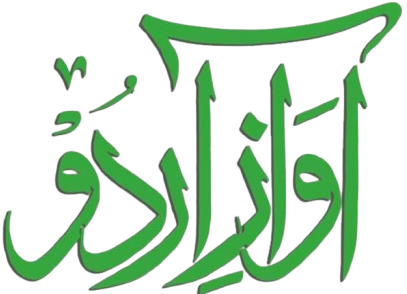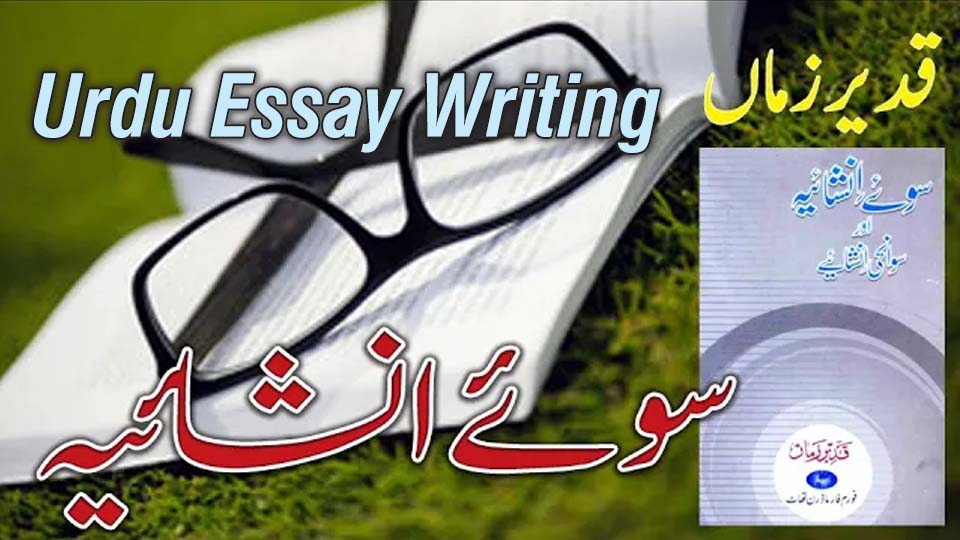Urdu Essay Writing is not just a literary form—it’s an experience. It blends thought, feeling, and expression into a single stream of consciousness that invites readers to think, feel, and even smile. Unlike academic articles or fictional stories, Urdu Essay Writing offers a creative freedom that is both profound and playful. It is neither entirely formal nor purely narrative; it dances between observation and introspection, all the while reflecting cultural and intellectual depth.
In this blog, we explore three powerful types of Urdu essay writing that every reader and writer must understand. These are not only stylistic variations but also windows into different dimensions of Urdu prose.
1. The Personal-Impressionistic Essay
This is the heart of classic Urdu Essay Writing. It focuses on personal experiences, emotions, and impressions rather than facts and analysis. Writers like Patras Bokhari and Rasheed Ahmad Siddiqui mastered this style by transforming mundane topics into delightful reflections.
Such essays are:
- Non-academic in tone
- Rich in humour, wit, and literary play
- Centered around the writer’s inner world
As explained in Qadeer Zaman‘s critical work “Soo-e-Inshaiya aur Sawanehi Inshaiye,” this form is the most “free” among prose genres, inviting a reader into the author’s thoughts without imposing structure or conclusion. It allows the writer to meander through ideas, drawing meaning from moments.
2. The Biographical Essay
In a more structured form, the biographical essay dives into real-life personalities with an artistic lens. Unlike a dry biography, this form of Urdu Essay Writing focuses on:
- The personality’s influence and experience
- The emotional and intellectual response of the writer
- A blend of facts and feelings
In his analysis, Qadeer Zaman effectively clarifies how biographical essays transcend storytelling. They offer literary depth and philosophical reflection. The essay on Deputy Nazir Ahmad serves as a prime example of how life stories can be transformed into aesthetically rich literature.
This form connects with readers because it blends human insight with narrative charm, making it a valuable tool in both education and creative writing.
3. The Journalistic-Literary Essay
Modern Urdu Essay Writing often overlaps with columns—especially when columnists like Atta-ul-Haq Qasmi, Tahir Masood, and Mujtaba Hussain bring literary style, satire, and humor into the socio-political commentary.
Qadeer Zaman highlights how some columns take on a true essayistic flavour:
- They blend journalism with literary creativity
- Use fresh, vibrant language
- Present analysis through narrative, not argument
This hybrid style forms a bridge between serious opinion writing and reflective essays. While grounded in current events, it retains emotional tone, language beauty, and often—humor.
Why These Types Matter in Modern Urdu Literature
Understanding these three forms—impressionistic, biographical, and journalistic-literary—is essential to appreciating the diversity within Urdu Essay Writing. These aren’t rigid categories but dynamic expressions that reflect the writer’s voice and the reader’s experience.
Writers like Qadeer Zaman play a vital role in distinguishing and documenting these forms. His book offers a structured yet engaging critique that helps readers differentiate between similar genres such as sketch, column, and reporting.
This nuanced understanding elevates the status of essay writing from an academic exercise to a rich, creative discipline that serves literature, journalism, and personal expression alike.
Conclusion: A Timeless Literary Craft
Urdu Essay Writing remains one of the most engaging and versatile forms of Urdu literature. It combines reflection, humor, personal insight, and literary aesthetics in a way no other genre can. Thanks to thinkers like Qadeer Zaman, we now have a roadmap to understand its evolution and inner mechanics.
Whether you’re a reader, student, or aspiring writer, mastering these three powerful types of Urdu essays will transform the way you see and write prose.
If you’re interested in reading this book, click the link below for a free download.
https://drive.google.com/file/d/1mc30wgNch4XDYMzg9x3QYbdiw_uuXfMr/view?usp=sharing
If you’d like to listen to this book in audio format, click the CONTACT button below to get in touch with the AwazeUrdu team to order the audiobook.
You can also watch the same video on these social media platforms.
اردو ادب میں انشائیہ ایک ایسی صنفِ نثر ہے جو خیالات کی روانی، تاثرات کی چاشنی اور اسلوب کی برجستگی سے لبریز ہوتی ہے۔ یہ نہ تو افسانے کی طرح مکمل بیانیہ ہوتا ہے، نہ ہی مضمون کی طرح علمی و تحقیقی، بلکہ ایک آزاد تخلیقی اظہار ہے جو قاری کو سوچنے، محسوس کرنے اور مسکرانے کا موقع دیتا ہے۔ انشائیہ، خاکہ اور کالم اگرچہ بظاہر ایک ہی دائرے میں آتے دکھائی دیتے ہیں، مگر فکری و اسلوبیاتی سطح پر ان میں نمایاں فرق پایا جاتا ہے۔ انشائیہ تاثراتی، غیر رسمی اور کسی موضوع پر فکری گہری میں ڈوبا ہوا ہوتا ہے؛ خاکہ ایک شخصیت یا موضوع کا مزاح آمیز اور جزوی تجزیہ ہوتا ہے، جبکہ کالم عموماً صحافتی سیاق میں کسی موجودہ مسئلے پر اظہارِ خیال کا ذریعہ ہوتا ہے۔ ان اصناف کے باہمی روابط اور امتیازات کو سمجھنے کے لیے قدیر زمان کی کتاب
“سوئے انشائیہ اور سوانحی انشائیے”
ایک قیمتی اور مدلل دستاویز کی حیثیت رکھتی ہے۔
قدیر زمان اردو کے ان تخلیق کاروں میں شامل ہیں جنہوں نے افسانہ، انشائیہ اور سوانحی ادب کے میدان میں بامعنی اور سنجیدہ کام کیا ہے۔ ان کے افسانوی مجموعے “رات کا سفر”، “ادھورا سفر” اور “پنجرے کا آدمی” اردو افسانے میں نئے اسلوب اور منفرد نقطہ نظر کا اضافہ کرتے ہیں۔ ان کی نثر فکری گہرائی، اسلوب کی شگفتگی اور موضوعات کی ہمہ گیری کے باعث قاری کو متوجہ کرتی ہے۔ قدیر زمان ان ادیبوں میں شمار ہوتے ہیں جنہوں نے اردو نثر کو خالص فکری و تخلیقی سطح پر آگے بڑھایا اور اس میں سنجیدگی، ندرت اور تنوع کی روح پھونکی۔
قدیر زمان کی یہ کتاب اردو انشائیہ نگاری پر ایک جامع تنقیدی و تجزیاتی مطالعہ ہے۔ کتاب میں انشائیے کی مختلف اقسام، اس کے تاریخی پس منظر اور فنی ارتقا پر مفصل بحث کی گئی ہے۔ مصنف نے انشائیہ نگاری کے آغاز سے لے کر جدید دور تک کے اہم انشائیہ نگاروں پر گفتگو کی ہے۔ ملا وجہی، سرسید احمد خان، پطرس بخاری، رشید احمد صدیقی اور خواجہ حسن نظامی جیسے اہم قلمکاروں کی تحریروں کا تجزیہ کرتے ہوئے، انشائیے کی صنفی شناخت کو واضح کیا گیا ہے۔ قدیر زمان نے سادہ اور مؤثر انداز میں بتایا ہے کہ انشائیہ تاثراتی، غیر رسمی اور تخلیقی ہوتا ہے، جب کہ سوانحی انشائیہ شخصیت، تجربے اور پس منظر کا فکری تجزیہ ہوتا ہے۔
آوازِ اردو کے زمرہ “ادبیات” میں قدیر زمان کی اسی کتاب سے ایک تفصیلی اقتباس پیش کیا گیا جس میں انشائیہ، کالم، خاکہ اور رپورتاژ کے باہمی تعلق اور فرق کو واضح کیا گیا ہے۔ مصنف کا کہنا ہے کہ اگرچہ یہ تمام اصناف تاثراتی اور مشاہداتی تحریر کا رنگ لیے ہوتی ہیں، مگر ہر ایک کی اپنی نوعیت اور اسلوب ہوتا ہے۔ مثال کے طور پر، رپورتاژ کسی واقعے یا اجلاس کی تخلیقی روداد ہوتی ہے، جس میں داخلی تاثر اور ماحول کی عکاسی شامل ہوتی ہے۔ کرشن چندر کا “پودے” اور شہاب الٰہ آبادی کی تحریر “کچھ منظر، کچھ پس منظر” اس کی عمدہ مثالیں ہیں۔
کالم نگاری میں طنز و مزاح، تجزیہ اور صحافتی اسلوب کے امتزاج سے ایک منفرد فن جنم لیتا ہے۔ پاکستان کے عطاء الحق قاسمی، طاہر مسعود اورہندوستان کے مجتبیٰ حسین جیسے کالم نگاروں کا ذکر کرتے ہوئے قدیر زمان ان کے اسلوب، شگفتگی اور فکری جہتوں پر بھی روشنی ڈالتے ہیں۔ وہ لکھتے ہیں کہ بعض کالموں میں انشائیہ نگاری کے عناصر بدرجہ اتم موجود ہوتے ہیں، خاص طور پر جب موضوعی بصیرت اور زبان کی تازگی سے کام لیا جائے۔
خاکہ نگاری کو مصنف ایک زیادہ مشکل فن قرار دیتے ہیں، جس میں مزاح لازم ہے مگر طنز اختیاری۔ سوانحی اور موضوعاتی خاکوں کی مثالیں پطرس بخاری، عصمت چغتائی، اپندر ناتھ اشک اور مرزا فرحت اللہ بیگ جیسے نامور ادیبوں کے خاکوں سے دی گئی ہیں۔ خاص طور پر “ڈاکٹر نذیر احمد کی کہانی” ایک کلاسیکی سوانحی خاکے کے طور پر پیش کی گئی ہے، جو ادبی جمالیات، شگفتگی اور معلومات کا حسین امتزاج ہے۔
انشائیہ نگاری اردو ادب کی ایک دلکش صنف ہے، جو قاری کو نہ صرف لطف دیتی ہے بلکہ سوچنے پر بھی مجبور کرتی ہے۔ قدیر زمان کی کتاب
“سوئے انشائیہ اور سوانحی انشائیے”
اس صنف کے فکری و فنی محاسن کو سمجھنے کے لیے ایک اہم ماخذ کی حیثیت رکھتی ہے۔ انہوں نے نہ صرف انشائیہ نگاری کے اجزاء اور اقسام پر روشنی ڈالی، بلکہ اس سے متصل اصناف جیسے خاکہ، کالم اور رپورتاژ کی حدود کو بھی ناپ تول کر واضح کیا۔ یہ کتاب اردو ادب کے سنجیدہ قاری کے لیے ایک فکری دعوت ہے، اور آوازِ اردو کے پلیٹ فارم سے اس کے اقتباس کی پیشکش اس کتاب کی اہمیت کو مزید اجاگر کرتی ہے۔ انشائیہ، اپنے ہلکے پھلکے، مگر پرمغز اسلوب کے ذریعے اردو ادب میں مسکراہٹ، فکر اور فن کا حسین امتزاج ہے—اور قدیر زمان اس کے نہایت مؤثر ترجمان۔

